Posted by : Shaheer Basheer
Tuesday, 14 October 2014
Introduction
We're looking for the best phone with a sub-5" screen. At a time when the best features seem to only come with the largest display, there's a strange, almost rebellious feel to it. No need to tell you, we're enjoying it. The Apple iPhone 6, Samsung Galaxy Alpha and the Sony Xperia Z3 Compact are probably having the time of their life too. These three are not just exceptions to the rule. They're making their own rules.
It's a sad reality for those who prefer compact - not small! - phones. Each year manufacturers come out with new features but like a movie sequel they feel compelled to go bigger than last time. It's how we ended up with 5.5" monsters being called "phones" (we can name several 5.5-inchers off the top of our heads, they are that popular).

The Sony Xperia Z1 Compact opened up a whole new niche early this year by squeezing flagship specs in a smaller body. And it was only just starting - Sony came up with the Xperia Z3 Compact, which is easily one of the best-equipped phones out there, regardless of size.
Samsung couldn't bother beefing up the mini and started from scratch. The Galaxy Alpha put metal back in Samsung's lineup, shaving off some thickness and weight along the way. It all worked out just fine and the new design was shared by the almighty Galaxy Note 4.
Apple took pride in having the best small phone for years but even Cupertino had to admit 4 inches just wasn't enough. The Apple iPhone 6 is the golden mean between the old 4" design and Apple's first phablet, the 5.5" iPhone 6 Plus. The aluminum unibody get even more refined.
In a three-way fight punches will be flying left and right so let's introduce the contestants before the commotion starts. Each phone has a few features the other two can't match, and that works the other way around too.
Sony pulled out all the stops and the Z3 Compact is the cheapest of the three, with the iPhone 6 on top and the Galaxy Alpha sitting in the middle. The company resolved the biggest outstanding hardware issue - the ample bezels - but it remains to be seen if it can address the biggest issue ahead of it, that the Xperia brand is nowhere near as popular as iPhone or Galaxy.
The Apple iPhone is a household name, many casual users say "iPhone" when they mean "smartphone." It reached this status with consistent quality and measured updates, there are no leaps in iPhone features.
Samsung is the only company that can challenge Apple in brand recognition right now and it's making the most of it. The Galaxy Alpha isn't one of the dozens lookalike Galaxies though. The tentative step towards a premium build is a big one for utilitarian Samsung.
If you're wondering why LG and HTC are not in the fray, the answer is that they don't have flagships in this class - the HTC One mini 2 is a midrange device (we recently compared it to the Galaxy Alpha) and the LG G3 mini is yet to be unveiled.
Hardware comparison
The three phones at hand have surprisingly different designs for being rounded rectangles. The Samsung Galaxy Alpha and the Sony Xperia Z3 Compact are more similar than it seems at first, both have metal frames with components sandwiched between two panels of glass/plastic.
The Apple iPhone 6 uses an aluminum unibody with a glass panel sealing the components inside. That gives it the biggest exposed metal surface, which adds a lot of "premium" weight. We have to dock it a few points for the bezels though, it's the biggest device here by some margin (a full centimeter taller than the Z3 Compact).
Samsung became known for its plastic phones, despite brief flirtations with metal like in the now defunct Wave series. The Galaxy Alpha replaces the silver plastic rim with a proper aluminum frame. It doesn't cover nearly as much surface as the iPhone and the plastic on the back is not the best even by Samsung standards. Still, the phone feels more premium than the Galaxy S5 and the sparing use of metal kept the Alpha light, at 115g it weighs as much as the old 4" iPhone 5s.
Sony had a similar design for the upper Xperia range but for the Z3 Compact the company covered the metal frame in soft-touch, semi-transparent plastic. The edges are separate pieces, which should absorb some of the force if the phone lands on edge (the worst case scenario). Still, the glass back is impractical - not as cool as metal, as easy to scratch as plastic and it shatters too (unlike metal and plastic).
A premium feel is certainly important but the other key factor we're looking for is compactness. After all, we can have all the premium we can stomach in the large-screen segment we're trying to get away from. Here are the dimensions for direct comparison.
| iPhone 6 | Galaxy Alpha | Xperia Z3 Compact | |
| Screen diagonal | 4.7" | 4.7" | 4.6" |
| Height | 138.1mm | 132.4mm | 127.3mm |
| Width | 67mm | 65.5mm | 64.9mm |
| Thickness | 6.9mm | 6.7mm | 8.6mm |
| Weight | 129g | 115g | 129g |
Sony's phones are usually bigger on average than devices with similarly-sized screen. The Sony Xperia Z3 Compact surprised everyone with just how little bezel there is - it has a slightly smaller screen sure, but it's easily the most compact device here. And Sony still found room for two speakers at the front.
The Samsung Galaxy Alpha doesn't have speakers but it does have hardware buttons, which do add some bulk. As a result the Alpha is half a centimeter taller than the Xperia.
The Apple iPhone 6 has the thickest bezels of the three - it's 11mm taller than the Sony and it's slightly wider than the two Androids. It's not even the thinnest in this comparison, iPhones usually had that advantage. Sure, the Galaxy Alpha's camera protrudes from the back but we're not sure this is an argument Apple wants to make.
Despite what Apple may have claimed in the past, a handset the size of an iPhone 6 is perfectly usable with one hand. Still, for the most expensive smartphone (and we don't mean just in this article) we think it's fair to expect excellence and we're not quite getting the best out of it here.
The Sony is the thickest of the three but its camera is flush with the back and has a significant advantage in battery capacity (to which will come up later). Speaking of batteries, the one in the Galaxy Alpha is user-replaceable, while the other two are sealed.
It's time for Sony to pull out the ace from its sleeve - the Xperia Z3 Compact has an IP68 rating, making it completely dust tight and able to dive beyond 1 meter of water. To achieve that Sony has had to protect most ports and slots with flaps (not the 3.5mm audio jack though).
The only real problem with this is that the microUSB port is covered, so you have to open the flap every time you want to charge the device or transfer files with a cable (which isn't as common as it used to be). You can buy a magnetic charger stand from Sony and avoid the hassle of opening the flap to charge but the stand is sold separately.
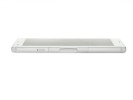
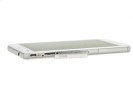
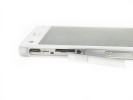
Access to some ports and slots is restricted by flaps but they do keep water out and you get a microSD slot
One of the flaps covers a microSD card slot, making the Xperia Z3 Compact the only phone with expandable storage here. It starts off with 16GB internal storage (as does the iPhone) and there are no other options, but memory cards are dirt cheap these days.
The Samsung Galaxy Alpha could have had an IP rating as well, the Galaxy S5 has it by default. It has a flap too, but we still feel it's a bit of a missed opportunity. iPhones, iPads and iPods never had water resistance so we weren't expecting it either (though there were some rumors).
While we're on the topic of practicality, we should cover the hardware keys offered by each device. Apple uses only one on the front - the Home key - that also contains a fingerprint reader. On the left are easy to use volume controls (volume rocker and dedicated ring/silent switch), on the right is the Power key. All keys are big and comfortable to use.
The Samsung Galaxy Alpha has a similar arrangement, including a fingerprint sensor on the Home key. You have to swipe your finger though, not just put it on the key, which takes some getting used to. The volume rocker and the Power key are on the thin side and not as easy to use.
The Sony Xperia Z3 Compact keys are somewhere in the middle with a trademark round aluminum power key. There's a hardware two-stage shutter key, too, which some prefer over on-screen keys. It also serves to launch the camera from a locked phone as quick as possible. What it lacks is a fingerprint sensor, which reduces the security options for screen lock and money transactions.
The Galaxy Alpha has something so far exclusive to a few Samsung phones - a heart monitor. It does sound as if it turns the Alpha into the better exercise assistant by allowing it to measure your heart rate but in reality, it's nowhere as convenient as it sounds, and an external sensor is always easier to use and more accurate.
Winner: Apple iPhone 6. No, it's not the most compact 4.7" phone but the aluminum unibody feels crafted rather than assembled. Despite the bezels, the iPhone 6 is perfectly usable with one hand and it's beautiful (though we could have done without the plastic lines on the back).
Runner up: Sony Xperia Z3 Compact. We're not too happy that Sony covered up the metal rim but it makes the phone more durable so we can live with it. The Xperia Z3 Compact is the most practical of the three with an IP68 rating and a card slot, plus it's the most compact.
Third place: Samsung Galaxy Alpha. The metal rim makes the phone feel more expensive but parts of it still look like a midrange Galaxy. It's thin and light but the plastic on the back isn't the best even by Samsung standards. The user-accessible battery is nice but we change microSD cards more often than we change batteries.
Display
It's two LCDs versus an AMOLED, all three around the same size. Samsung the only company that consistently uses AMOLED displays on its flagships - no wonder since it's making them in-house.
The Galaxy Alpha packs a 4.7" Super AMOLED with 720p resolution and 312ppi pixel density. It's a diamond-pattern PenTile matrix so the actual sharpness isn't quite as high as it sounds on paper. If you know what to look for you can notice some fuzziness in high-contrast areas but it's nothing major and it's more of a nitpicking.
Both Apple and Sony stick to LCD, specifically IPS LCD for some great side viewing angles. Compared to SuperAMOLEDs, LCDs tend to be brighter but have lower contrast, and then there's the whole color accuracy debate.
The Apple iPhone 6 has a 4.7" display with the unusual resolution of 750 x 1,334px or just over 720p, giving it the 326ppi pixel density. Note that apps that don't support the new resolution will be upscaled from 640 x 1,136px, which would actually reduce the subjective image sharpness significantly.
The Sony Xperia Z3 Compact has the smallest display of the bunch, 4.6", with 720p resolution. The difference in surface area is pretty small, less than 5%, but the Sony is the only one with on-screen buttons, which makes more of a difference. They take up an extra 8% of the screen surface area.
Before we jump on to image quality, let's cover the available screen protection first. All three phones use various brands of shatterproof glass. The one on the iPhone 6 has a smoothly chamfered edge, which very pleasantly curves into the sides of the curved metal body of the phone.
The two LCDs in this fight are some of the brightest we've tested, hitting 720-740 nits. That gives them a very clear lead on the Super AMOLED, which tops out at 450 nits. The black levels on the LCDs stay acceptable even at full blast, the iPhone 6 manages a respectable 1,200:1 contrast ratio while the Xperia slips under 1,000:1. As usual the AMOLED screen offers the best contrast, which makes images really pop.
| Display test | 50% brightness | 100% brightness | ||||
| Black, cd/m2 | White, cd/m2 | Black, cd/m2 | White, cd/m2 | |||
| 0 | 228 | ∞ | 0 | 456 | ∞ | |
| - | - | - | 0.77 | 725 | 942 | |
| 0.17 | 207 | 1230 | 0.61 | 740 | 1213 | |
Sunlight legibility is a function of the screen's brightness and reflectivity. The very bright iPhone 6 screen does very well here, coming in behind only a few phones, notably the iPhone 5 and Galaxy Note 3. Samsung's Super AMOLED assembly keeps reflectivity low so it achieves a very good result too, despite the deficit in brightness.
The Xperia Z3 Compact disappoints here, despite being one of the brightest screens it's very reflective too, earning it only an average mark.
Sunlight contrast ratio
- Nokia 808 PureView4.698
- Apple iPhone 53.997
- Samsung Galaxy Note 33.997
- Apple iPhone 63.838
- Samsung Galaxy K zoom3.675
- Nokia Lumia 9303.567
- Apple iPhone 5s3.565
- Samsung Galaxy S53.549
- Alcatel Idol X+3.527
- Samsung Galaxy Alpha3.509
- Sony Xperia Z3 Compact2.616
- Sony Xperia Z1 Compact1.772
We mentioned colors before, mainly because AMOLEDs have a reputation for oversaturating. That's true but Samsung has added several modes to let you manage the exact level of saturation, you can pick between several settings until you find the one that suites you best.
Sony also have display tuning options, but those give you sliders so you can control the white balance. There's also a choice of X-Reality and Super-vivid image enhancing modes. Apple offers no screen calibration options.
Putting the phones side by side, the iPhone 6 screen is closest to the mark in terms of white balance (it's slightly warm). The Xperia Z3 Compact is close behind (a bit too cool), while the Galaxy Alpha has a noticeable yellow tint. We tried switching the color modes but those mainly affected color saturation and not the white balance.
For viewing angles, the iPhone 6 and Galaxy Alpha perform beautifully with no noticeable changes in color and contrast. The Xperia Z3 Compact screen did exhibit some shift but that's only under the widest of angles.
Before the conclusion of this chapter, there are just a couple of features left to cover. Both the Samsung and Sony phones have dedicated high-sensitivity touch modes so they can be operated with gloves. The Xperia Z3 Compact also has a double tap to wake feature, which is a personal favorite in our team.
Winner: Apple iPhone 6. It's the brightest, with the best legibility and with great colors and viewing angles. The chamfered glass is pleasant and the overall image quality is wonderful.
Runner up: Samsung Galaxy Alpha. The white balance is off, but you only notice when you have something to compare it to. The Super AMOLED does very well in direct sunlight and has stunning contrast, but it's not as bright as the LCDs.
Third place: Sony Xperia Z3 Compact. It's smaller both due to its diagonal and due to the omnipresent on-screen buttons, though the bigger issue is that it's just too reflective. It also has the biggest contrast shift when looked at a really wide side angle.
Connectivity
Connectivity - both wide area and local - has mostly evened out. There are still some differences between the three devices that might prove crucial for some. Note that the specs might differ by region, you should consult the specifications and your carrier for exact details.
The main market of the Apple iPhone is the US so it comes with both GSM and CDMA connectivity (plus TD-SCDMA for the Chinese version). The fastest connection is on LTE (again with TD-LTE for China), reaching theoretical speeds of up to 150Mbps downlink.
Apple has upgraded the call functionality so the iPhone 6 can use Voice over LTE (VoLTE), which offers high-quality audio with HD Voice, as well as Wi-Fi calling (also known as UMA this solves some reception issues). Of course, both need to be supported by your carrier.
The Samsung Galaxy Alpha and the Sony Xperia Z3 Compact are pure GSM devices. They have 150Mbps LTE as well though the Snapdragon 801 version of the Galaxy is rated at 300Mbps (not that you'd find such a carrier). The Xperia Z3 also supports VoLTE.
In terms of local connectivity, all three phones have dual-band Wi-Fi a/b/g/n/ac with hotspot support. Both iOS and Android have separate ways to send files over Wi-Fi, but iOS lacks native DLNA functionality. Bluetooth v4.0 with Low Energy mode is supported on all three devices, the Androids also have ANT+ for sports accessories.
NFC is available on all three phones though Apple has limited it to Apple Pay only. On the other two you can use it to pair devices, transfer files and read/write NFC tags.
GPS and GLONASS are available for positioning, the iPhone 6 and Xperia Z3 Compact have barometers to speed up the initial lock.
Finally, we come down to wired connectivity. Apple is sticking to its own standard, the Lightning port, which can be plugged-in two ways for added convenience. It serves the purposes of charging and transferring data and audio/video but you'll need Lightning cables and adapters and they usually cost more than their USB equivalents.
Sony and Samsung use the industry standard microUSB 2.0 port (Samsung is stepping back from microUSB 3.0). The main duties of the port are charging and data, but Sony has also added included MHL (for HDMI out) and USB On-the-go functionality to their port. Samsung has not, leaving the Galaxy Alpha with no wired TV Out option.
None of the three phones have IR blasters for what that's worth.
Winner: Sony Xperia Z3 Compact. It offers VoLTE and its microUSB port is equipped with MHL and USB OTG functionality. ANT+ and NFC are nice to have and the barometer is also a nice perk, which can speed location services in densely built areas.
Runner up: Apple iPhone 6. Having VoLTE, Wi-Fi calling and CDMA is valuable for US users, but Apple's reluctance to add proper NFC support, plus the proprietary port and the more expensive connectivity accessories keep the iPhone 6 from grabbing the victory. The addition of Wi-Fi 802.11ac and a barometer are welcome improvements though.
Third place: Samsung Galaxy Alpha. The 300Mbps LTE options will leave you looking for a carrier to use it on and no wired TV out is less than perfect.
Battery life
The current trend in smartphones is for razor-thin devices with enormous displays. This article rails against the massive screens but there's a case to be made against thin phones too - many people consider battery life more important than a slim profile (as long as it's kept under 9-10mm, of course).
The Sony Xperia Z3 Compact is the poster boy, being the thickest of the three but also enjoying a significant advantage in battery capacity. At 2,600mAh it has a good 40% more juice than the 1,810mAh and 1,860mAh batteries of the Galaxy Alpha and iPhone 6 respectively.
We should note that we're using the Exynos 5430 version of the Galaxy Alpha for these tests.
If you read our review of the Z3 Compact you'll know it's an absolute battery champ, falling behind only much larger devices. The iPhone 6 is not bad either, it helps that Apple gets to optimize both software and hardware (including a custom chipset). The Galaxy Alpha did surprisingly well for its battery capacity - Android is more resource hungry than iOS.
The Sony managed an impressive 16 hours 40 minutes of talk time on a single charge. That's 3-4 hours ahead of the other two and essentially means that talk time won't have much of an impact on your total battery life. The Galaxy Alpha beats the iPhone 6 by an hour here.
Talk time
- Huawei Ascend Mate2 4G33:19h
- Sony Xperia ZR17:48h
- HTC One (E8)17:47h
- Samsung Galaxy Note II N710016:57h
- HTC Desire 700 dual sim16:56h
- Samsung Ativ Odyssey I93016:41h
- Sony Xperia Z3 Compact16:40h
- LG Nexus 516:40h
- Nokia Lumia 93016:40h
- Samsung I9295 Galaxy S4 Active16:40h
- Sony Xperia M216:40h
- Sony Xperia M2 Aqua16:39h
- Samsung Galaxy Alpha13:20h
- Apple iPhone 612:26h
The Xperia Z3 Compact stunned us with its stamina while browsing the web - it went on for nearly 15 hours before it finally ran out of charge. Speaking of, the phone has a power-saving feature called Stamina mode if you really need to stretch the remaining milliamps in the battery. The Galaxy Alpha has a similar feature, while the iPhone does not have anything of the sort.
Anyway, the iPhone 6 did a respectable 10 and a half hours - surprisingly, not much different time than it achieved in the call test. The Galaxy Alpha loses the fight with a 2-hour deficit to the iPhone. Keep in mind that for most phones lasting 8 and half hours is an amazing result - the 5.5" LG G3 only manages 6:40, for example.
Web browsing
- Huawei Ascend Mate2 4G16:41h
- Sony Xperia Z3 Compact14:52h
- Samsung Galaxy S5 mini13:14h
- Sony Xperia C12:45h
- Nokia Lumia 152012:40h
- Sony Xperia Z1 Compact12:37h
- HTC Desire 700 dual sim12:30h
- Apple iPhone 610:29h
- Samsung Galaxy Alpha8:25h
- Sony Xperia L6:40h
For video playback the Xperia Z3 Compact pulls another 15-hour shift, beating the other two by a huge margin. It lasts nearly twice as long as the Galaxy Alpha and its 8 hour time. The Apple iPhone 6 does slightly better - 9 and a half hours - but it doesn't close the margin.
Video playback
- LG G Flex19:57h
- Huawei Ascend Mate2 4G18:01h
- Samsung Galaxy Note 417:25h
- Motorola RAZR MAXX16:35h
- Sony Xperia Z3 Compact15:03h
- Motorola DROID RAZR MAXX14:17h
- Samsung Galaxy Note 313:32h
- Sony Xperia T2 Ultra13:12h
- Samsung I9190 Galaxy S4 mini13:12h
- Nokia Lumia 102013:12h
- Apple iPhone 69:24h
- Samsung Galaxy Alpha8:05h
- LG Optimus G E9757:16h
The final tally shows a stunning 101-hour endurance rating for the Sony Xperia Z3 Compact. Small wonder with these individual times. And it's not just the battery capacity either - 40% more milliamp hours is a good start but the Z3 Compact opened up a bigger margin in some of the tests.
The Apple iPhone 6 and Samsung Galaxy Alpha have relatively similar endurance ratings but part of that is due to the efficient standby of the Galaxy Alpha. The iPhone beat it in two out of three tests with a decent margin.



Winner: Sony Xperia Z3 Compact. It will last you four days of moderate usage, two days of heavy usage and we can't imagine a scenario where you kill it in a day under normal usage.
Runner up: Apple iPhone 6. Getting two days of moderate usage will be a breeze. Even with heavy usage you'll still get two days, though it might die on the second day before the night is out.
Third place: Samsung Galaxy Alpha. It achieves good results with what it has but most of the time it won't make it through two full days of heavy usage.
User interface
iOS was always polished but closed off to users wanting to customize their experience, unlike Android, which gives users (and vendors) nearly unlimited control over the system. Well, the latest iOS 8 version loosens up the Apple reins, which tangibly improves the user experience.
iOS 8 itself doesn't change much - the Big Change came with iOS 7 when Apple dropped skeuomorphism and followed the flat UI trend. The major difference between 7 and 8, however, is that users can now have widgets, custom keyboards and better app integration into the OS menus.
The widget system isn't nearly as powerful as the Android one, widgets can only live in the notification area. They have become much more interactive, so you can accomplish more without ever leaving the current app. The homescreen of the OS is still the simple grid of shortcuts and folders.
Sony sticks close to stock Android (4.4.4 KitKat in this case) and has a multi-pane homescreen filled with few shortcuts and folders, but mostly widgets. The apps go into the app drawer so only the important ones take up space on the homescreen.
Samsung has fiddled with this formula a bit to add the My Magazine pane - subscriptions to Internet news sources go in here so you always have access to a Flipboard-like feed, unless you chose to disable My Magazine.
The lockscreens of the three phones agree on one thing - a camera shortcut is all you need, plus playback controls if you're listening to music. Apple and Samsung add an extra layer of security with their fingerprint readers (both on the Home button). They are quicker to enter than a password, arguably more secure too.
One key difference here is that the Apple reader only needs you to put your finger on top, while Samsung's needs you to swipe your chosen finger. This can be difficult to get right with the angle your finger (usually your thumb) will be at.
Apple has opened access to the fingerprint reader for third-party apps and it will be a part of the new Apple Pay system. Samsung allowed app access to the reader from the get go and has a deal in place with PayPal for mobile payments.
On the Galaxy Alpha the fingerprint reader can also be used to protect your files, locked away in Private mode, which can only be opened with your finger.
Sony does have a nice lockscreen trick, you can wake the phone with a double tap on the screen, so you don't need to reach for the Power button (not that it's much of a stretch). You can also add widgets to the lockscreen if you wish.
On the iPhone Apple decided to split the notification area - notifications go in the top drawer, while toggles and other controls go in the bottom drawer (the so-called Control Center). With iOS 8 widgets can be added in the top drawer by third party developers instead of the few Apple-made stock widgets like stocks.
Android keeps both notifications and toggles under one roof. In TouchWiz that is literally the case as toggles, two buttons, a brightness slider and notifications are visible simultaneously, though you can switch to a toggles-only view. Sony takes the stock Android approach of splitting notifications and toggles into tabs, which leads to less clutter. You can choose and pick your toggles on both Android phones, while Apple has locked the Control Center layout.
Both platforms can multitask but they differ in their approach. Android offers true multitasking with apps running in the background, while iOS is much more restrictive. In practice the user experience isn't too different but this frugal use of resources allows iOS 8 to run smoothly on just 1GB of RAM, while its opponents have 2GB or more. There's only so much that fits in 1GB though, so you might notice some reloading as you switch between apps, say Safari refreshing the page when you return to it.
Speaking of multitasking, TouchWiz on the Samsung Galaxy Alpha has the split-screen functionality we've seen on bigger phones. While a 4.7" screen isn't ideal to run two apps side by side you can do it and it's actually useful in some scenarios.
Sony takes a slightly different approach, small, floating apps can be launched from the Xperia Z3 Compact app switcher. They take up a precious portion of the 4.6" screen but are good for a quick check and easily dismissed without exiting the current app.
iOS on the iPhone 6 has not multitasking improvements - the bigger iPhone 6 Plus got a split-screen interface for some apps in landscape mode (the same app but displaying two panels), but Apple keeps such functionality for larger screens.
The Spotlight feature has been updated and can now search through more resources - Wikipedia, news articles, nearby places, Apple's digital stores and so on. Google Search is quite thorough as well, but also allows installed apps to provide search results, something Spotlight does not. Also, once you search for something, say an address, Google Now will remember it and pop up with helpful info or interaction right on time (e.g. a Navigate to option in your notification area).
Siri is the best-known digital assistant and it can now recognize songs with Shazam integration. You just start Siri, you don't even need to say anything. You can activate Siri with a voice prompt too - "Hey, Siri!" - but that only works while the phone is charging.
Samsung has been in the digital assistant game a long time too and while Google Now has overshadowed most vendor efforts, S Voice still provides some helpful options (like toggling settings) that keep the Galaxy Alpha on par with the iPhone. The Xperia Z3 Compact relies on Google voice actions.
As for song recognition, Sony preloads TrackID and you can always get a free app from the Play Store.
A major change in iOS is that apps can insert themselves into the Share with and Open with context menus of the OS. This is one of the most powerful features on Android, allowing for a seamless experience with both native and third-party apps.
Yet another Android-inspired change is that iOS users can now install custom keyboards - alternative typing methods can improve your speed and accuracy or just add a silly, fun feature like responding with GIFs.
And we're not done yet, iOS 8 also offers an app-by-app breakdown of how the battery charge was spend, something introduced with the ancient Android 2.3 Gingerbread.
Winner: Samsung Galaxy Alpha. The fingerprint reader enables extra security and Private mode pushes it beyond unlocking the phone and securing payments. With a proprietary voice assistant, split-screen multitasking and My Magazine the company went perhaps too far but it can't be accused of not doing enough.
Runner-up: Apple iPhone 6. The new iOS 8 adds many of the features we missed compared to Android and the fingerprint reader setup is better than Samsung's. Siri and Spotlight getting better are welcome additions too.
Third place: Sony Xperia Z3 Compact. Sony did little to mess with the vanilla Android recipe and mini apps aren't quite enough. Some will prefer the aesthetics of the Xperia interface over often-bashed TouchWiz.
Performance
Both Apple and Samsung use in-house chipsets (though the Galaxy Alpha also comes in a Snapdragon 801 version), while Sony uses Qualcomm offerings for most of its lineup.
Apple bought a CPU design company and has been using custom cores ever since. The latest is called Cyclone, which debuted with the iPhone 5s and the iPhone 6 uses a slightly tweaked version. Apple's CPUs are only dual-cores and run at a low frequency but they are closer to an Intel core than the usual ARM cores.
The company claims a 20% speed improvement over the last generation, which was competitive with the quad-core Kraits of the time. The other half of the Apple A8 chipset comes from Imagination, the PowerVR GX6450. It's as much as 50% faster than the GPU in the A7 chipset but the increased resolution of the new, bigger screen offsets most of that.
Samsung's custom chipsets are based on standard ARM Cortex cores, four of A15 and four of A7 in the case of the Samsung Galaxy alpha. The chipset is SMP-enabled, meaning it can run all eight cores at once, subject to thermal restraints. The GPU in the Exynos 5430 chipset also comes from ARM's labs, A Mali-T628 MP6.
Snapdragon 801 is at the heart of the Sony Xperia Z3 Compact and the alternative Galaxy Alpha version. They have four Krait 400 cores paired with Adreno 330, both coming from Qualcomm. It's a tried and tested chipset, offering great performance to the many high-end Androids out there.
Geekbench 3 finds a good use for the many cores of the Samsung Galaxy Alpha chipset and puts it on top with a small margin but having fewer cores certainly didn't hurt the iPhone 6. In fact, it tops the Basemark OS II chart. This benchmark doesn't appreciate Exynos 5430 nearly as much as Geekbench and places the Galaxy Alpha last.
Meanwhile the Sony Xperia Z3 Compact shows a middle of the road performance - you won't be short on CPU power, but you can't brag about benchmark scores to your friends either.
GeekBench 3
Higher is better
- Samsung Galaxy Alpha3214
- Apple iPhone 62924
- Sony Xperia Z3 Compact2856
Basemark OS II
Higher is better
- Apple iPhone 61252
- Sony Xperia Z3 Compact1167
- Samsung Galaxy Alpha915
Apple has stuck with PowerVR GPUs through the years and they haven't let Cupertino down. The latest generation is very impressive and manages to top the charts even in the 1080p off-screen tests, even though none of the three phones ahs the screen to show a 1080p image.
GFX 2.7 T-Rex (1080p offscreen)
Higher is better
- Apple iPhone 642.6
- Samsung Galaxy Alpha31.3
- Sony Xperia Z3 Compact27.4
GFX 3.0 Manhattan (1080p offscreen)
Higher is better
- Apple iPhone 617.7
- Samsung Galaxy Alpha13.4
- Sony Xperia Z3 Compact11.8
More importantly, the iPhone 6 hits a solid 30fps on the heavy GFX 3.0 Manhattan benchmark, while the two Adenoids don't quite make it to the 30fps mark. Benchmarks are typically more demanding than games (it's a form of future-proofing the benchmark) but even so iOS devs can squeeze out a bit more out of the hardware.
They already start off with an advantage over their Android counterparts since Apple has only a few GPU and screen resolution targets, while Android games need to serve a much wider and diverse audience.
In the battle between Mali-T628 MP6 and Adreno 330, the Mali-powered Galaxy Alpha beats the Adreno-running Xperia Z3 Compact by a small but not insignificant margin.
GFX 2.7 T-Rex (onscreen)
Higher is better
- Apple iPhone 651
- Samsung Galaxy Alpha48.4
- Sony Xperia Z3 Compact41.3
GFX 3.0 Manhattan (onscreen)
Higher is better
- Apple iPhone 629.2
- Sony Xperia Z3 Compact25.4
- Samsung Galaxy Alpha25.3
Kraken 1.1
Lower is better
- Apple iPhone 64710
- Samsung Galaxy Alpha4911
- Sony Xperia Z3 Compact6480
Note that different game engines behave differently on various GPU architectures and the Basemark X test prefers running on Adreno rather than Mali. The PowerVR-based iPhone stays on top though, with a healthy margin to boot.
Basemark X
Higher is better
- Apple iPhone 617054
- Sony Xperia Z3 Compact12080
- Samsung Galaxy Alpha11065
There's a battle going on between mobile apps and web sites but regardless of the shifts in power there a fast browser is a must for a modern flagship. Apple has its own browser, Safari, with its own HTML and JavaScript engines. Finely tuned to the hardware they run on, the iPhone 6 edges out the Galaxy Alpha in JavaScript performance and leaves the two Androids in the dust in HTML speed as measured by BrowserMark 2.1.
Samsung tunes the stock Android browser to perform as well, which shows in the speed advantage over the Chrome-running Xperia Z3 Compact. Chrome is no slouch though and pays off with slightly faster page rendering, but the gap to the iPhone is truly impressive.
BrowserMark 2.1
Higher is better
- Apple iPhone 63153
- Sony Xperia Z3 Compact1500
- Samsung Galaxy Alpha1364
Basemark OS II
Higher is better
- Apple iPhone 61252
- Sony Xperia Z3 Compact1167
- Samsung Galaxy Alpha915
Winner: Apple iPhone 6. The iPhone is no underdog - casual users may be misled by CPU core count but the Apple handset won almost all of the challenges here. Apps, games and websites have processing power to spare and can deliver a flawless experience.
Runner-up: Samsung Galaxy Alpha. The Exynos 5430 chipset beat out Snapdragon 801 in certain benchmarks and you can try and get an S801 Galaxy Alpha too. Not that you'll see much difference in performance. Neither is as fast as the Apple A8 though.
Third place: Sony Xperia Z3 Compact. Snapdragon 801 is certainly fast enough for daily use - apps, gaming and browsing - but the iPhone will be noticeably faster in some scenarios.
Multimedia
With cameras a major point of pride for each of our three phones, their gallery apps play a very important role. Each maker put their own spin with proprietary features.
The Apple iPhone 6 has a sort of mini social network built-in, thanks to the Shared photos feature. Photos are shared between you and your friends, you can invite friends and family to join in. Finding a photo is easy, they are organized by time and location into what Apple calls Moments. A cool option is the Recently deleted folder, which easily recovers accidental deletions.
Sony, the longtime camera maker, came out with Album. It syncs online albums (Sony's own PlayMemories as well as Facebook, Picasa and Flickr) and has handy options to share a photo on those networks too. Album also sorts photos by location and even by the faces in those photos. Automatic slideshows based on SensMe algorithms can easily turn an album into a fun video to show off.
Samsung's Gallery app also comes with online album integration (Facebook, Dropbox and Picasa) and can natively connect to DLNA devices. It can sort photos by faces like the Sony app too. As a reminder, Private mode unlocks a folder where you can keep sensitive photos safely.
The Samsung music player is one of the most feature-rich we've seen. Highlights include the clever SoundAlive feature that shows an intuitive chart instead of a potentially confusing equalizer. A 7-band equalizer with additional options is there for the more experienced users or you can let the Adapt Sound feature test your headphones and your hearing and find the best settings automatically.
Easy playlist creation based on mod or music period is supported and Smart volume will make sure there are no jarring jumps in volume between tracks.
The Exynos 5430-based Samsung Galaxy Alpha features a dedicated Cortex-A5 processor core exclusively to decode and process audio.
Sony brings the legendary Walkman name to the table. It supports noise-cancelling headphones (including the ones that come in the Xperia Z3 Compact box) and has a manual equalizer too, plus a number of proprietary sound-enhancing features.
Dynamic normalizer is the equivalent to Smart volume. High-Res audio and the Digital Sound Enhancement Engine claim to improve the audio quality of low-bitrate songs, but we think that's just a gimmick - you can't upscale photos to improve their quality and you can't do the same with audio.
The Infinite button makes song-related searches easy - you can look for artist info on Wikipedia, song video on YouTube, song lyrics on Google and more.
The Sony Xperia Z3 Compact has an FM radio receiver with RDS support. If that doesn't give you the name of the song, you can always tap the TrackID button to identify it.
Whatever the source of the music, you can always use the front-facing stereo speakers on the Z3 Compact, which make for a better experience than the single speakers on the Galaxy Alpha and the iPhone 6. They don't sound as good as HTC BoomSound speakers but we suppose that is due to soundproofing in no small extent.
Of course, Sony is pushing its Music Unlimited service, which is a music store that can help you discover new tracks and artists with the Charts, New releases and Channels feeds but can be disabled if you prefer.
Apple is doing much the same with iTunes Radio - it's an ad-supported service (ads go away if you pay for iTunes Match) that helps you discover new music. If you hear something you like you can hit the Buy button. There's no equalizer here though.
The Samsung video player natively supports next-generation h.265 video (though our samples failed to play) and most current formats (not DivX or multi-channel audio though). There's excellent subtitle support too, the only thing missing is wired TV out, you have to use Wi-Fi based screen mirroring, which suffers from compatibility issues.
Sony's multimedia package is rounded off by the Movies app. It has HDTV-like functionality in that it automatically finds information on movie files stored on your device. Unfortunately that doesn't work with TV show episodes and subtitle options are more limited. There is MHL 2.0 support for HDMI-out with an adapter though. And if you watch on the phone, the front-facing speakers do a good job at directing the movie's audio towards your ears.
Apple solves the format compatibility headaches by having you transcode all videos via iTunes. Or you can just buy a video from the iTunes store. TV out is there but the Lightning-to-HDMI adapters are pricier than MHL adapters and there's no subtitle support.
Winner: Sony Xperia Z3 Compact. Stereo speakers, noise-cancellation support, a cheap wired TV-out option, FM radio, excellent preloaded multimedia apps all add up to a victory for the Sony mini-flagship.
Runner-up: Samsung Galaxy Alpha. Samsung loaded each app with tons of features but somehow forgot about MHL. AdaptSound feature does wonders in making the most put of your headphones.
Third place: Apple iPhone 6. The new Photos app is great but we can still see the property limits of Apple's walled garden. The audio and video players are a bit light on features too.
Loudspeaker
All three phones scored an Average on our loudspeaker test but they are not equals, not exactly anyway. The Sony Xperia Z3 Compact has two speakers on its front so they project sound outwards when you lay it on a table. Both the Apple iPhone 6 and the Samsung Galaxy Alpha have a single speaker on their bottom, which makes the sound more directional.
| Speakerphone test | Voice, dB | Ringing | Overall score | |
| 65.9 | 62.1 | 73.5 | Average | |
| 66.6 | 61.7 | 75.7 | Average | |
| 66.6 | 65.7 | 72.8 | Average |
Winner: Three-way tie. We already gave the Sony Xperia Z3 Compact props for a good sound experience in the music and video player in the previous chapter but as far as notification duties go, none of the phones deserves a win with Average results.
Audio output seems equally good on all three
Before we start with this one, we need to get something out of the way. All three contestants are excellent performers as far as their audio output is concerned and unless you are a proper audiophile and have a library full of high-bitrate audio tracks, you won't find much difference.
In the first part of our we hook up each smartphone to an active external amplifier and let them show their best possible output. The Galaxy Alpha posted the best scores here with no leak points to its performance whatsoever.
The iPhone 6 was doing great up until it came to the stereo crosstalk test where it produced only an average score. That left it behind the Sony Xperia Z3 Compact, which has slightly lower (but still excellent results) elsewhere, but no gaps to its performance. In terms of loudness the Galaxy Alpha and the iPhone 6 were inseparable, while the Xperia Z3 Compact was a notch behind.
Next we repeated the test with our standard pair of headphones. This time the Apple iPhone 6 and the Galaxy Alpha were almost identical in their performance, while the Xperia Z3 Compact had higher stereo crosstalk than either of them. And volume levels told the very same story, adding up to the following overall results.
| Test | Frequency response | Noise level | Dynamic range | THD | IMD + Noise | Stereo crosstalk |
| +0.06, -0.02 | -94.0 | 93.9 | 0.0012 | 0.0065 | -73.4 | |
| +0.11, -0.06 | -93.8 | 93.8 | 0.0022 | 0.099 | -65.1 | |
| Samsung Galaxy Alpha | +0.01, -0.04 | -96.6 | 92.8 | 0.0058 | 0.0091 | -97.1 |
| Samsung Galaxy Alpha (headphones attached) | +0.04, -0.01 | -95.7 | 92.7 | 0.013 | 0.033 | -65.6 |
| +0.02, -0.08 | -85.2 | 85.2 | 0.013 | 0.022 | -85.3 | |
| +0.10, -0.01 | -85.4 | 85.4 | 0.020 | 0.045 | -45.1 |

Apple iPhone 6 frequency response

Samsung Galaxy Alpha frequency response
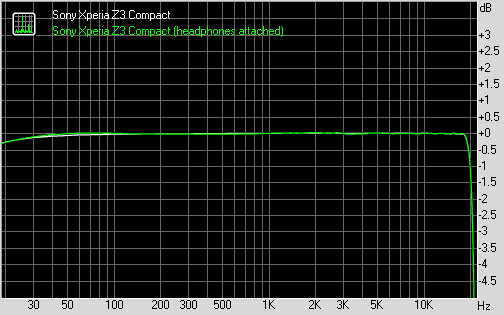
Sony Xperia Z3 Compact frequency response
You can learn more about the tested parameters and the whole testing process here.
Winner: Samsung Galaxy Alpha. Cleanest output and joint highest volume levels clinch this one for the Samsung handset.
Runner-up: Apple iPhone 6. While no longer the best around, the iPhone 6 is still an excellent audio performer and good enough for the second place here. It was as loud as the Galaxy Alpha, but its stereo quality let it down slightly.
Third place: Sony Xperia Z3 Compact. An excellent performer on its own, the Sony Xperia Z3 Compact came just short of its competitors here - its scores were a tad lower and so was its volume level, meaning it has to settle for the bronze medal.
Camera features
Sony is the long time camera maker, Samsung has its own camera division as well. Apple's foray into digital cameras was long ago, enough to be forgotten, but the iPhone become the most popular camera model years ago.
The company has been using the same resolution - 8MP - for four years, but increased the sensor size last generation. For the 6 generation Apple included phase-detection autofocus for fast, accurate focus lock. The dual-LED flash has been reshaped (it's now round) but it still has two LED colors to mix and match in order to provide a more natural looking flash light.
Sony has stretched its camera tech too, the first 20.7MP sensor was introduced with the Xperia Z1. That's two generations ago but with Sony's fast release cycle this means only a year ago.
Samsung is using a 12MP sensor with 16:9 aspect ratio but it is yet to officially confirm that it's a homebrewed ISOCELL like the 16MP sensor of the Samsung Galaxy S5.

Along with the slightly improved image sensor, Apple also slightly improved the software. The company promises better digital image stabilization and higher resolution panoramas. It gives you slightly more control during shooting too, if you tap to focus you get a slider to adjust the exposure. This is in addition to the old option to lock focus and exposure.
Apple declined the invitation to the 2160p party, instead adding 1080p@60fps and 720@240fps modes. In slow-motion mode you can choose between 120fps and 240fps (both at 720p) but you need to go into settings to enable 1080p@60fps. UHD TVs are plummeting in price but Apple doesn't care. Stereo has been the standard for a century and Apple still doesn't care - we do though, mono sound is a major downside on such an expensive device.
Samsung took practically all camera modes from the Galaxy S5 and ported them to the Galaxy Alpha. The most useful modes include Dual Camera (picture-in-picture mode with front and back camera), Selective Focus (the trendy shallow depth of field effect) and Shot & more (which combines several effects in one shot).
The video department boasts 2160p@30fps as well as 1080p@60fps. High framerate modes are available at 720p resolution - 4x slow down at 120fps. An 8x mode is available too but that just halves the playback rate to 15fps instead of 30fps.
Sony is addicted to camera modes, more than even Samsung. You get Normal mode and Superior Auto, but also all sorts of other single use case options. The more interesting ones help you livestream video to Facebook or YouTube, the less useful ones (unless you give the Z3 Compact to a kid to play with) create 3D rendered dinosaurs or throw imaginary bombs into the scene, but can also add floating words in the image.
For low-light photography Sony has bravely come up with a special High ISO mode in the Z3 pair, so under special circumstances (8MP Normal mode) the ISO can go as high as 12,800 (you can't select it manually, it's only available in AutoISO mode when it's almost pitch dark).
Still camera quality
Apple and Sony are at the two extremes - barely any camera modes on the iPhone 6 and a ton of modes and sub-modes for the Xperia Z3 Compact.
The two major ones are Superior Auto (which downsamples the output of the sensor to 8MP and crops to 16:9 aspect ratio) and Normal mode (which does image processing at native 20.7MP resolution). We know from experience both modes can produce quite different results so we'll be including both. This also makes comparing the Sony with the 12MP Galaxy Alpha more fair.
Apple didn't change image processing much, the red colors still tend towards orange. White balance is good, but with a slight warm tinge. The iPhone 6 tends to expose for to the shadows so sunlit areas sometimes end up too bright or even overexposed.
The Samsung Galaxy Alpha doesn't have issues with the red channel but colors overall are oversaturated. White balance is the most accurate of the three. When viewing the image from up close, the signs of postprocessing are easy to spot. The camera underexposes shadows but still doesn't completely protect highlights from blowing out.
The Sony Xperia Z3 Compact ends up with a cool white balance and colors are fairly accurate but actually a bit undersaturated. The camera overexposes images slightly but less than the iPhone does.

In terms of image quality the Samsung Galaxy Alpha comes out on top. Yes, Samsung turned up the sharpening dial quite high but the result is crisp text and good-looking foliage.
The Apple iPhone 6 image looks softer (but also less processed). Still, the lower resolution sensor misses out on detail captured by its competitors. Also in areas of lower contrast, the fine detail starts to blend together.
The 8MP Superior Auto photos from the Sony Xperia Z3 Compact have an edge over the iPhone in high-contrast areas but complicated detail like foliage doesn't look as good. The full resolution 20.7MP shots from Normal mode have more detail than the iPhone but it doesn't pop as much as on the Galaxy Alpha. And it's not for lack of sharpening either, you can clearly see oversharpening halos around darker areas of the Z3 Compact's image (they are more visible than in Samsung's photos).

Winner: Samsung Galaxy Alpha. It brought the most detail out of our test scenes and offered an accurate white balance. Colors are on the saturated side and pixel peepers will spot processing artifacts but in general Galaxy Alpha photos are very good.
Runner-up: Sony Xperia Z3 Compact. The resolution advantage of Normal mode was not used to the fullest but it's a nice option to have. The 8MP Superior Auto shots will probably be used more often and despite some color issues they look slightly better than iPhone 6 photos.
Third place: Apple iPhone 6. The iPhone 6 camera is showing its age - detail is good for an 8MP shooter but the 8MP sensor is overstretching to match what the higher resolution sensors offer. Also the color rendering could use some work.
HDR mode
We've already seen that the dynamic range of these phones doesn't always cut it, so it's important to put the HDR mode through its paces. A note about the Xperia Z3 Compact and its many modes - we took a photo in Superior Auto (8MP), one with HDR on (only available at Normal mode 8MP or less) and one in Normal mode at full resolution.
The Samsung Galaxy Alpha did a great job at capturing correctly the bright sky but in doing so darkened the other areas of the image. That means it doesn't pull out any more detail in the shadows, but the good news is that the processing is good (so there's no ghosting or artifacts) and the contrast of the photo is kept high. HDR naturally lowers contrast and can look quite bad when taken to extremes.
The Apple iPhone 6 HDR mode is very quick (you can barely feel it's on) but it doesn't do much either. It lowers contrast a bit (easy to see in the gradient of the sky) and it mainly preserves the highlights, while barely doing anything about the shadows.
The Sony Xperia Z3 Compact is a good example where HDR goes too far. The photo starts looking flat due to its low contrast, which makes colors very undersaturated and kills a good deal of the fine detail as well. Superior Auto and Normal mode do a pretty decent job on their own but the supposedly intelligent Superior Auto doesn't achieve more than regular Normal mode.

Winner: Samsung Galaxy Alpha. The HDR shots have more detail in bright areas and maintain a pleasant contrast.
Runner-up: Apple iPhone 6. The iPhone 6 HDR mode didn't do much than preserving the highlights but sometimes that's better than doing the wrong thing.
Third place: Sony Xperia Z3 Compact. We'd recommend staying off the HDR mode as it mostly kills contrast and colors and adds nothing of value. Both Superior Auto and Normal modes produce better results.
Panorama
Apple reworked the panorama mode on the iPhone 6 so it achieves higher resolution. The end results are impressive - large, sharp photos with accurate stitching. The camera also does a good job of handling both shadows and highlights (which do get overexposed), which is a common problem with panoramas.
The Samsung Galaxy Alpha panoramas match the iPhone in resolution (but you have to shoot in portrait orientation). Disappointingly, stitching isn't very accurate, especially visible in the white markings on the road. Shadows were a bit underexposed and highlights go over.
The Sony Xperia Z3 Compact is quite a bit behind on resolution, sticking to a 1080p vertical. The software is also very finicky about sweeping speed (it will abort if you move too fast or too slow) and if you don't complete the full 360° circle it's a 50/50 whether it will save the image or not. When it does save it, it fills in the rest of the frame with grey area (which we've cropped out of the sample below).
Winner: Apple iPhone 6. Stunning resolution, trouble-free stitching and good dynamic range make this an easy victory.
Runner-up: Samsung Galaxy Alpha. It may match the iPhone in resolution but the processing isn't nearly as good, with plenty of stitching issues. The dynamic range isn't as good either.
Third place: Sony Xperia Z3 Compact. Low resolution and finicky software and the end result is a soft image with not quite perfect stitching.
Still camera, low light
For the low-light test we took samples with the flash off and on. The reasoning behind this is that smartphone flashes (apart from the rare xenon flashes) have a short reach and the flash is no help in many scenes. We've selected the best and worst photos out of several to show the consistency - handshake or missed focus can ruin your shot so it's often a good idea to take several shots unless you know the camera is dependable.
We start off with the no flash test as a baseline. Note that for the Xperia Z3 Compact we used only the Superior Auto mode since resolution doesn't help in the dark.
The Apple iPhone 6 used an ambitiously low ISO 250 and 1/15s shutter speed. Thanks to the phase detection autofocus all shots were in focus and the results are quite good - expectedly some detail was lost but noise is kept low and there's plenty of detail left. The iPhone 6 camera proved consistent and dependable.
The Samsung Galaxy Alpha used a similar shutter speed, 1/17s, but a higher ISO 400. Signs of postprocessing become very evident and the level of detail isn't as good as on the iPhone. Neither was consistency, the Galaxy Alpha suffered the most from handshake.
Sony Xperia Z3 Compact also shot at ISO 400 but at the fastest shutter speed of the three, 1/32s. This eliminates handshake issues but it slightly missed the focus in the "worst" photo. When everything goes okay photos look better than those from the Samsung (thanks to more restrained processing) but without a noticeable lead in fine detail.

With the flash on, the Apple iPhone 6 turned ISO down to 100 and it can produce some impressively detailed shots. The relatively slow shutter can lead to off shots too.
The Samsung Galaxy Alpha both dropped the ISO to 250 and sped up the shutter speed to 1/30s. That didn't help much though, the good case scenario doesn't bring much detail and there's still the possibility of blurry shots.
The Sony Xperia Z3 Compact kept the 1/32s shutter speed and slightly decreased ISO to 320. The camera proved very consistent (better than the iPhone) and the photos have nearly as much detail as the iPhone 6 shots.

Note that the Sony Xperia Z3 Compact has a High ISO mode that goes up to 12,800. It's only available in Normal mode at 8MP and you can't select it manually, but it's the only option to make a photo in extreme darkness (much darker than our test shots) where you can't use the flash. The results are not great, but the great thing is that it's even possible to do.
Winner: Apple iPhone 6. The phase detection autofocus made a big deal in consistency and the camera produces good quality shots both with and without flash. The slow shutter speed was a minor issue.
Runner-up: Sony Xperia Z3 Compact. Very consistent with its fast shutter speed, the Xperia Z3 Compact offered good levels of detail in both test cases.
Third place: Samsung Galaxy Alpha. Heavy processing is mostly unable to resurrect lost detail and the consistency of the camera was not very good.
Video camera quality
Apple has yet to join 2160p revolution, but Androids consider it a rite of passage. These videos take up a lot of storage (and are consequently difficult to send over the Internet), require an UHD TV and a capable video player but pay off with much more detail - they have four time the number of pixels compared to 1080p, each frame is 8MP big.
The Sony Xperia Z3 Compact pushes the framerate to 55-60Mbps, so each minute of footage can easily be 400MB. The Samsung Galaxy Alpha stays a little lower at 50Mbps but that's still huge compared to 17Mbps for 1080p videos shot with the Apple iPhone 6.
2160p videos have their issues but Apple's refusal to record stereo audio is more baffling - the iPhone has no less than four microphones on its body, we're sure Apple engineers could have come up with something. And it's 64Kbps, 44.1kHz audio too, nothing special by any measure.
Meanwhile both the Samsung and Sony record stereo audio, sampling at 48kHz. The Xperia uses 156Kbps bitrate while the Galaxy goes up to 256Kbps (Nokia uses this bitrate for its lauded PureView cameras).

Sony's super-high bitrate doesn't completely pay off, but mostly due to image processing. Some detail gets smudged out, while contrast and color rendering aren't as good as they could have been.
Samsung's heavier processing does pay off, making for a better looking picture even if it doesn't technically have more detail.
The Apple iPhone 6 video has good amounts of detail for 1080p, but the resolution difference keeps it from achieving parity here.
We move to native 1080p - easier to share and easier to compare. The Samsung and Sony have a wider field of view (in part because we disabled their image stabilizations, more on that later) so they are at a bit of a resolution disadvantage.
Here the Apple iPhone 6 comes up on top even if our remarks on colors from the still camera still ring true. The Sony Xperia Z3 edges out the Galaxy Alpha even though video framerates drop to equal the iPhone. The Xperia Z3 Compact could use a boost in contrast but its image is slightly sharper than that of the Galaxy Alpha.

Here's a playlist of the videos we used for the test:
We tried a digital stabilization test between the three phones. The Apple iPhone 6 keeps things very smooth, but the Sony Xperia Z3 Compact fares no worse. Both hunt for focus on occasion. Of the three, the Galaxy Alpha's digital stabilization is the weakest as evident from the video comparisons.
Winner: Samsung Galaxy Alpha. We're looking for the best possible video camera of the three, which means 2160p weighs more than 1080p. And the Galaxy Alpha took that round, though it lost by a bit to the Xperia in 1080p shooting.
Runner-up: Sony Xperia Z3 Compact. Again, 2160p has precedence as it offers a lot more detail than even excellent 1080p. In 1080p mode the Sony has a wider FoV than the iPhone and comparable sharpness.
Third place: Apple iPhone 6. If you're never going to shoot 2160p videos, the iPhone is actually a very good camera. The always-on stabilization eats into its FoV though it's better than the Sony.
High framerate recording
While Apple didn't go up in resolution, the company did at least increase framerates. All three phones can record 1080p@60fps video, which is excellent for fast-paced scenes like sporting events. They all noticeably step down the image quality though so you can't simply always substitute 30fps for 60fps modes.
The Apple iPhone 6 and Samsung Galaxy Alpha still manage a passable quality. The Galaxy Alpha resolves marginally more detail than the iPhone. It's the Sony Xperia Z3 Compact that falls here, the boosted contrast and oversharpening is noticeable and it hampers the image quality.

Apple went a step further - it enabled 240fps video recording though at 720p resolution. Still, Androids top out at 120fps, even those that can capture 2160p video. And the results aren't always pretty. Here's how 720p@240fps footage from the iPhone compares to 720p@120 from the Galaxy Alpha.

The Galaxy Alpha is just nowhere near actual 720p resolution, it's quite clear the video was upscaled from something much lower than that. The image processing also goes out the window. Meanwhile the iPhone 6 video looks soft for 720p but is actually still very usable.
A note about formats - the iPhone records and saves 720p videos with 240fps framerate so you'll need to either edit them on the phone to create the slowdown effect or use a video editor on your computer, just copying them would only get you an extra smooth normal speed video. The Galaxy Alpha videos are slowed down to 30fps so the slow motion is easy to share. There's an option to slow the videos down to 15fps, which matches the iPhones 8x slowdown but the result isn't as smooth.
The Sony Xperia Z3 Compact also has a 720p@120fps mode, but that one requires you edit the video right after shooting it - it plays at real time except for areas you mark off as slow motion. This means, however, that taking multiple consecutive videos are hard to pull off.
Here's a playlist of the 1080p@60fps videos we took:
Winner: Apple iPhone 6. It maintained good quality in 1080p@60fps mode and is the only one of the three that can go up to 240fps.
Runner-up: Samsung Galaxy Alpha. It recorded slightly better 1080p@60fps video than the iPhone, but the 120fps mode is near useless.
Third place: Sony Xperia Z3 Compact. Video quality at 1080p@60fps leaves plenty to be desired, while 120fps mode requires you edit the image right after you take it.
Video, low light
In the same dark room we took the lowlight camera samples we also shot a few short videos handheld, with the flash both off and on. For this test we used only 1080p, as once again the extra resolution would not have captured any additional detail.
Sony Xperia Z3 Compact didn't see much difference whether the flash was off or on, but the videos have very little noise and good amounts of detail. Noise reduction did take out some of the finer detail, though keep in mind that the wider field of view makes it harder to resolve the same level of detail.
The Apple iPhone 6 videos have a noticeable yellow cast on them (and those two-color LEDs were of no help) but the amount of detail is quite good, while noise is kept relatively low.
The Samsung Galaxy Alpha shows signs of color noise and digital artifacts, which reduce the overall detail.

Winner: Sony Xperia Z3 Compact. Videos were fairly sharp and with low noise.
Runner-up. Apple iPhone 6. Yellow tint in the photos and noise cost it a few points, but it does keep a good level of detail.
Third place: Samsung Galaxy Alpha. Some color noise and digital artifacts have crept into the footage, which spoils the final result enough to land the Alpha in third place.
Final words
It's impossible to tally up a final score for this but that was never the point - as usual, the point is to help different users pick out the phone that's right for them. The super mini playground is not as empty as it once was and these three phones are excellent picks at three different price points.

The Sony Xperia Z3 Compact is the most affordable of the bunch so it celebrates each of its victories a little louder than the other two. The Apple iPhone 6 meanwhile is easily the most expensive one and has the most to prove, yet its fans are rarely swayed by such mundane details such as pricing.
Sony Xperia Z3 Compact
The Sony Xperia Z3 Compact lives up to its name by being the smallest of the three, but it also has the smallest screen for apps (on-screen buttons don't help). Sunlight legibility and viewing angles are not a strong suit either. A waterproof body and a stunning battery life are practically super powers for the Sony and it offered the best connectivity package overall.
In terms of interface, it offered little over stock Android but the multimedia package is excellent. The front-facing stereo speakers are another trump card over the other two contenders.
The still camera is very good - though not in first place as its 20.7MP resolution would suggest - and video recording is on par as well. The Xperia Z3 Compact performs especially well in the dark, though Sony really needs to work on the HDR and panorama software.
Samsung Galaxy Alpha
The Samsung Galaxy Alpha is a U-turn for a company where features are king, design left well in the background. No, it's not the prettiest device on Earth but it feels more premium than most Galaxy's (costs more, too) and has a very good screen, with excellent contrast and sunlight legibility.
Connectivity and battery life are not as good as they could have been, but the software is loaded with the most features, including a very rich multimedia package. Despite of its size and small battery, the Galaxy Alpha is one of the best performing Androids out there thanks to Samsung's bespoke Exynos 5430 chipset (though some regions will only get the Snapdragon 801 version).
The camera is Galaxy Alpha's chance to shine and it takes it, for the most part. The still and video camera are excellent in good light and additional features like HDR and panorama perform great too. Shooting in the dark causes headaches for the Alpha though and that 120fps mode was just embarrassing.
Apple iPhone 6
Apple sure knows how to build a gorgeous device and it has perfected the LCD - excellent image and high sunlight legibility. Connectivity is top notch too, if you're okay with buying pricy accessories that only work with Apple products. Battery life is better than the Galaxy Alpha but still nowhere near the Xperia Z3 Compact.
The software has improved by leaps and bounds in the last two versions of the OS. Android is still more open but iOS 8 will handle every need casual users and moderate tech-heads have with third-party keyboards, widgets and system menus that make non-Apple apps feel welcome.
The camera is getting long in the tooth, an 8MP sensor and 1080p video with mono sound are a hard pill to swallow yet another year. But what Apple touched from the last generation turned to gold - panoramas look amazing, the phase detection autofocus really improves focusing speed and high framerate videos are great, especially at 240fps.
Still photos and 1080p@30fps videos shot in broad daylight are no better than ones taken with the iPhone 5s, which isn't what you want to hear when considering a pricy upgrade with a possible two-year commitment.
Summing it up
The Sony Xperia Z3 Compact is a marvelous little handset for its price tag. It's worth considering over flagships if you have large screen fatigue and it requires the least amount of micromanagement, regarding remembering to keep it charged and making sure it doesn't get wet. The camera is good in general, better than average in the dark, and the Snapdragon 801 offers a familiar zippy performance.
Samsung is charging a premium on its premium device, the Galaxy Alpha is more expensive than the better-equipped Galaxy S5 flagship. And it delivers on the performance and camera fronts, though we would have loved an IP rating and a microSD card slot, which the S5 has.
The Apple iPhone 6 gradually improves on its predecessor to remain one of the best devices out there. The price tag stings - it's €150 more expensive than the Galaxy Alpha and that's for the compromise 16GB version (keep in mind that even a mere OTA OS update can require up to 5GB free).
There will always be people who specifically want an iPhone so we reckon this comparison would be worthless to them except for the chapters where the iPhone wins. Android on the other hand doesn't exactly promote brand loyalty. We've come to think of the two platforms as polar opposites but this is probably the first time they're showing so much respect for each other. OK, perhaps a little too strong a statement. But they've done each other a favor and they know it. Compact droids wouldn't have come this far without the iPhone. And Apple - well, they had to step out of their comfort zone sooner or later.
contnt courtesy:gsmarena



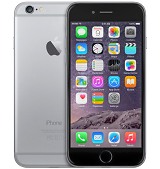
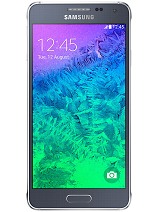




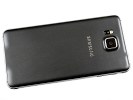


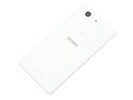





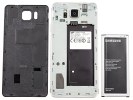





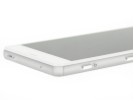

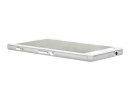




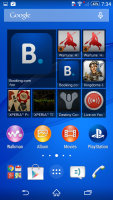


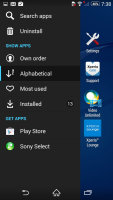
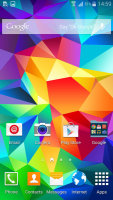
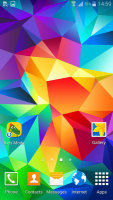
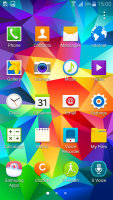





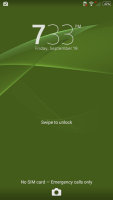
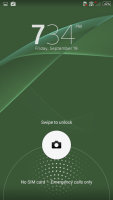
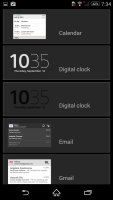




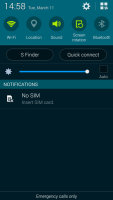



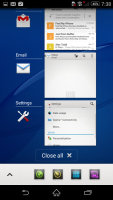
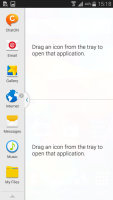
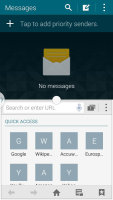
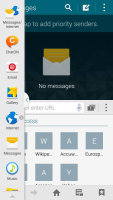

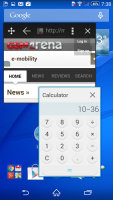
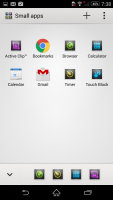
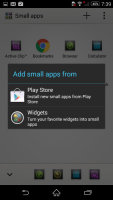

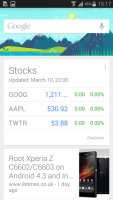
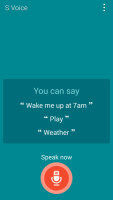








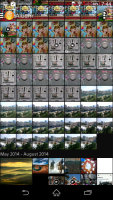
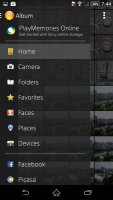

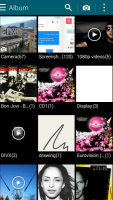
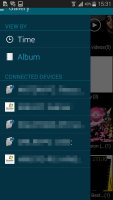
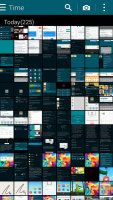
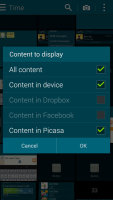
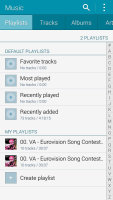
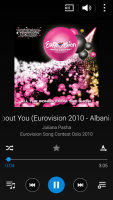
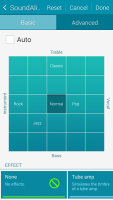
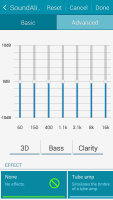
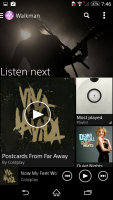
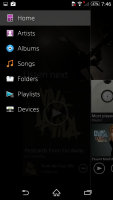

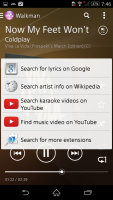
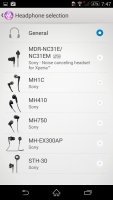
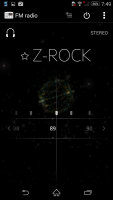
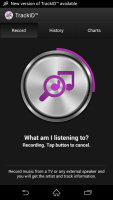




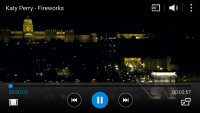
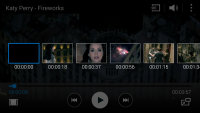
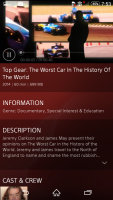
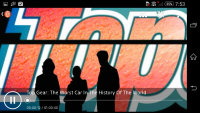
































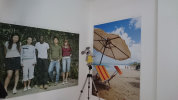
















.jpg)


.jpg)

good
ReplyDeleteSearch for new xperia z3 root
ReplyDeleteIts really looking Different from others and thanks for sharing
ReplyDeleteWeb Designing Company Bangalore
Web Development Company Bangalore
Web Design Company Bangalore
This comment has been removed by the author.
ReplyDelete